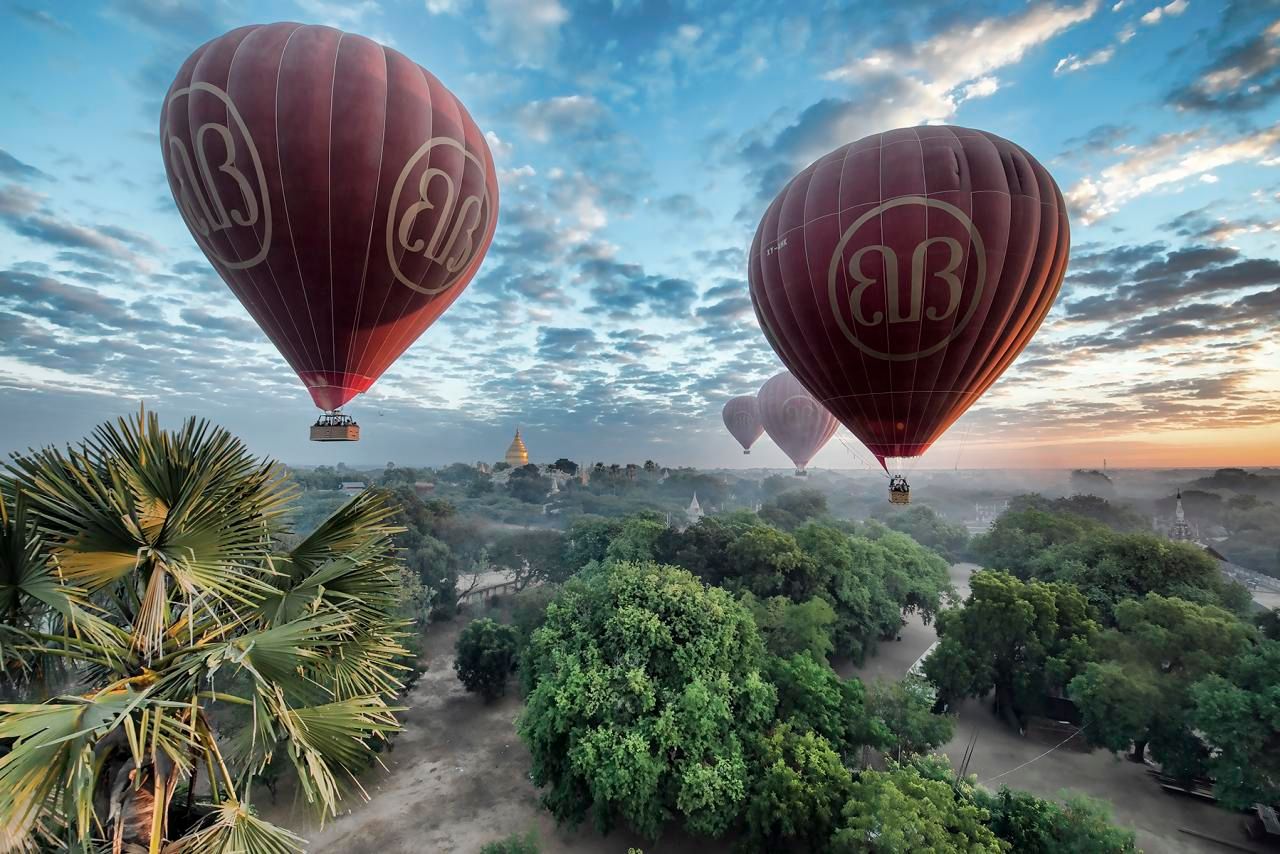Tourism in Myanmar
.jpg)
Balloon rides are a popular way for tourists to see pagodas and other areas of scenic beauty in Burma/Myanmar.
Tourism in Myanmar (also known as Burma) is a slowly developing sector. Although Burma possesses great tourist potential and attractions in many fields, much of the industry remains to be developed. Also, the number of visitors to Burma is small compared to her neighbours - even outpaced by Laos. This is primarily due to its current political situation. However, after the junta transferred power to the civilian government, the tourism sector saw an increase in tourism arrivals and in 2012, tourist arrivals surpassed the one million mark for the first time. In 2013, the Tourism Master Plan was created, targeting 7.5 million arrivals by 2020.[1]
Tourism in Burma has been developed mainly by the government, but many private enterprises do exist, catering to a wide range of tourists.
Since 1992, the government has encouraged tourism in the country.
In 2010, 791,505 foreign tourists visited Myanmar, with 295,174 foreign tourists entering the country via Yangon International Airport.
In 2012, more than 1 million foreign tourists visited Myanmar and that figure is expected to rise to around 1.5 million in 2013.
In 2013, the number of foreign arrivals reached more than 2.04 million, counting both air and overland arrivals.
Tourism has been promoted by advocacy groups as a method of providing economic benefit to Burmese civilians, and to avoid isolating the country from the rest of the world. Voices for Burma, a pro-democracy advocate group, states, "We believe that small-scale, responsible tourism can create more benefits than harm. So long as tourists are fully aware of the situation and take steps to maximise their positive impact and minimise the negatives, we feel their visit can be beneficial overall. Responsible tourists can help Burma primarily by bringing money to local communities and small businesses, and by raising awareness of the situation worldwide."
Regardless, a majority of advocacy groups discourage tourism. The junta's forced labour programmes were focused around tourist destinations which have been heavily criticised for their human rights records. A former Burmese tourism minister estimated that 12% of the government revenues are derived from tourism, with the tourism industry contributing $182 million USD (2007) to the government's annual budget.